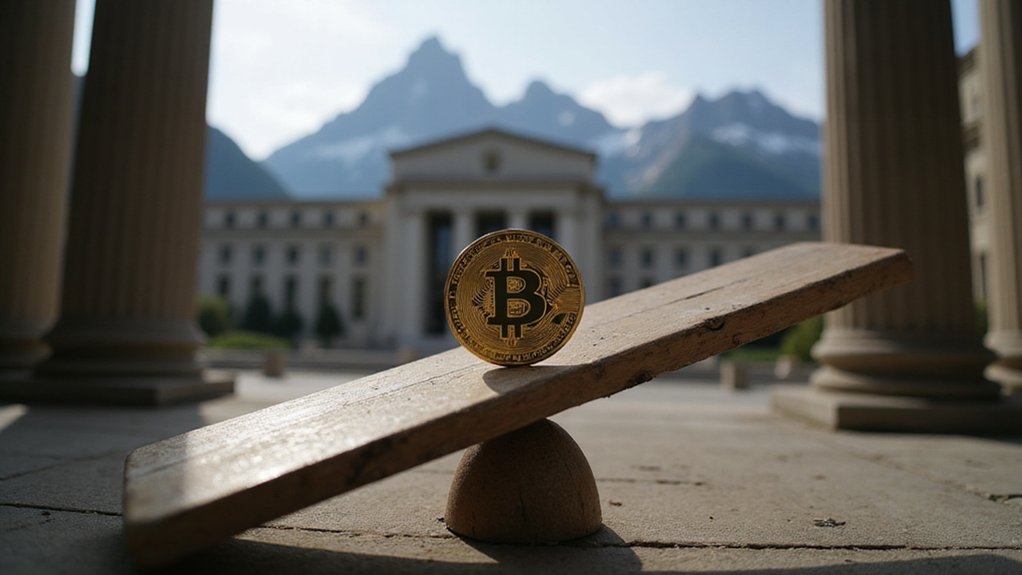Gwei represents one billionth of an ether (0.000000001 ETH), serving as Ethereum’s standard unit for expressing gas prices without drowning users in decimal places. This denomination—short for gigawei—transforms incomprehensible fractions like 0.000000025 ETH into digestible whole numbers, enabling straightforward transaction fee calculations where gas consumed multiplies by the Gwei price. Users bid higher Gwei amounts during network congestion to prioritize their transactions, creating a dynamic auction system that somehow makes paying more feel almost reasonable. The mechanics behind this pricing structure reveal fascinating market dynamics.

The peculiar nomenclature of cryptocurrency has gifted the world with “Gwei”—a term that sounds more like a cartoon character’s exclamation than a fundamental unit of digital currency measurement. Yet this diminutive designation serves as Ethereum‘s primary gas pricing mechanism, representing one billionth of an ether (0.000000001 ETH) and providing the granular precision necessary for network fee calculations.
Gwei, short for gigawei, equals precisely one billion wei—the smallest denominational unit of ether. This hierarchical structure mirrors traditional currency systems, though the scale renders dollar-to-cent analogies almost comically inadequate. Where dollars contain mere hundreds of cents, a single ether encompasses one billion Gwei, creating mathematical relationships that would make conventional accountants reach for stronger coffee.
The practical significance of Gwei emerges through its role in gas fee determination. Every Ethereum transaction requires computational resources, quantified as “gas,” with prices denominated in Gwei. Rather than wrestling with unwieldy decimal expressions like 0.000000025 ETH, users can simply reference 25 Gwei—a conversion that transforms microscopic fractions into manageable integers. Understanding these calculations helps users leverage gas fee calculators to estimate transaction costs more accurately.
Gwei transforms Ethereum’s microscopic decimal nightmares into digestible integers, making gas fee calculations blissfully comprehensible for mere mortals.
Transaction fees follow a straightforward formula: gas consumed multiplied by gas price (expressed in Gwei). This mechanism creates a dynamic pricing environment where users fundamentally bid for network priority. Higher Gwei offerings incentivize miners and validators to process transactions more expeditiously, while budget-conscious participants can submit lower bids and wait patiently for network congestion to subside. Beyond Ethereum, Gwei serves as a unit of measurement on other blockchain networks like RSK, where it represents a subdivision of RBTC.
The beauty of Gwei lies in its elimination of decimal complexity. Smart contract executions, token transfers, and decentralized application interactions all quote fees in Gwei, enabling users to make informed cost-benefit decisions without calculator gymnastics. A transaction costing 21,000 Gwei conveys immediate comprehension compared to its 0.000021 ETH equivalent.
This pricing granularity proves crucial during network congestion, when gas prices fluctuate dramatically based on demand. Users can adjust their Gwei offerings with surgical precision, optimizing the balance between transaction speed and cost—a dance that has become second nature to experienced Ethereum participants who’ve learned that patience pays, quite literally, in reduced fees. Since the implementation of EIP-1559, the fee structure now includes both a base fee that gets burned and an optional priority tip for miners.
Frequently Asked Questions
How Do I Calculate Gas Fees in USD From Gwei?
To calculate gas fees in USD from Gwei, one multiplies the gas used by the gas price (in Gwei), then divides by 10^9 to convert to ETH, and finally multiplies by ETH’s current USD price.
The formula becomes:
Gas Fee (USD) = Gas Used × Gas Price (Gwei) × ETH Price ÷ 10^9.
Tools like Etherscan’s gas tracker or Alchemy’s calculator streamline this conversion process automatically.
What Causes Gwei Prices to Spike During Network Congestion?
Network congestion triggers gwei price spikes through classic supply-demand dynamics—users compete for limited block space by bidding higher gas prices to expedite transaction processing.
Popular dApp launches, NFT drops, or DeFi activity create transaction bottlenecks, while Ethereum’s fixed block capacity (previously discussed in gas calculations) becomes overwhelmed.
This auction-like mechanism rewards miners with premium fees, inevitably pricing out smaller transactions during peak congestion periods.
Can I Set a Custom Gwei Amount for My Transactions?
Most modern Ethereum wallets—including MetaMask and Crypto.com’s offering—permit custom Gwei adjustments through advanced gas controls, typically accessible via settings icons during transaction confirmation.
Users can manually input specific gas prices, balancing cost versus speed based on network conditions. However, this feature targets experienced users; setting Gwei too low risks indefinite pending transactions, while excessive amounts waste funds on unnecessary fees, making strategic calibration essential.
What’s the Difference Between Standard, Fast, and Slow Gwei Rates?
Standard, fast, and slow Gwei rates represent transaction speed tiers determined by priority fees offered to validators.
Fast rates (highest tips) secure inclusion within 30 seconds, while standard rates target five-minute confirmation, balancing cost and efficiency.
Slow rates minimize fees by accepting 30-minute delays—a curious gamble where patience theoretically pays off, assuming network congestion doesn’t render one’s frugality counterproductive when urgency unexpectedly emerges.
How Does Ethereum 2.0 Affect Gwei and Gas Prices?
Ethereum 2.0’s shift to proof-of-stake fundamentally restructured gas dynamics, though not quite as dramatically as many anticipated.
The Merge itself barely nudged gwei rates downward, while the Dencun upgrade’s proto-danksharding proved far more consequential—boosting throughput from 15 to 1,000 TPS.









